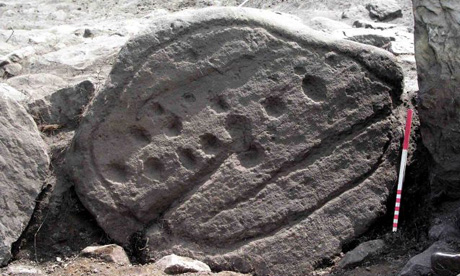It was a huge fire that ravaged the Fylingdales Moor in North Yorkshire for six days, burning 2.5 square miles and pealing away thousands of years of vegetation to the bedrock.
Underneath the blanket of peat, it turns out, was a wealth of rock art and bronze age boundary stones.
“We have always known that this part of the world is very rich in prehistoric remains,” said Graham Lee, senior archaeological conservation officer for the national park. “But the sheer number of new finds exposed by the fire is the most exciting development in archaeology in my experience.” The rock art list for the site, part of a vast moor also used by the RAF’s Fylingdales satellite tracking and early warning station, has grown to almost three times its previous size, with more than 100 sets of mysterious lines, cups and circles discovered since the fire.
“One of the very rare features exposed by the removal of the entire plant and soil covering is a set of defined borders to the areas cultivated in the bronze age,” said Lee.
They’ve also found flint tools, 18th c. drainage tunnels, and most recently, shell craters from WWII artillery practice.
Nice that there’s an upside to environmental disaster, especially since there’s no way archaeologists could ever even approach excavating such a massive area, even if they were allowed to despoil the natural beauty of the area.

Lucky them! Love that rock.
Let’s just hope archaeologists won’t be tempted to play the arsonist. :shifty:
I often wonder what old stuff is covered by all the underbrush and Mediterranean Woodland around my moshav. . .
Put down that matchbook, Dina! :blankstare: